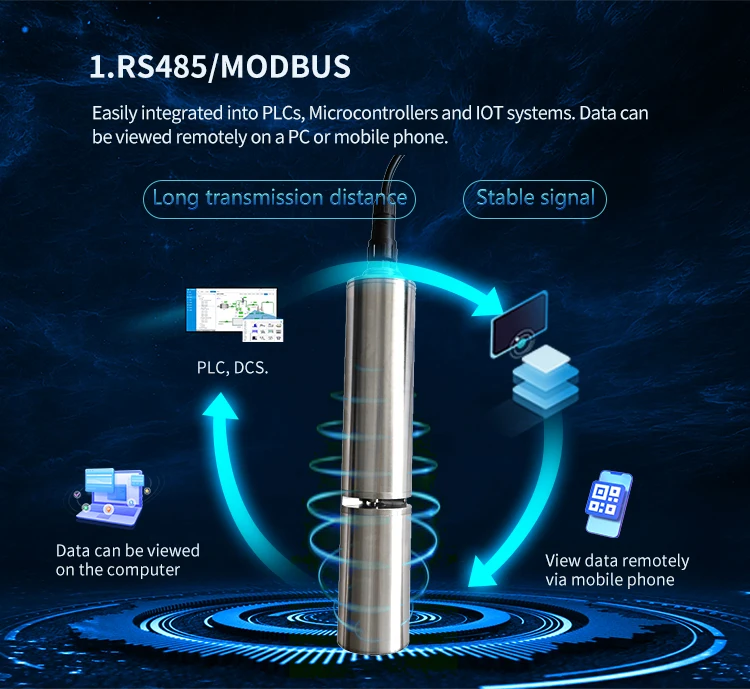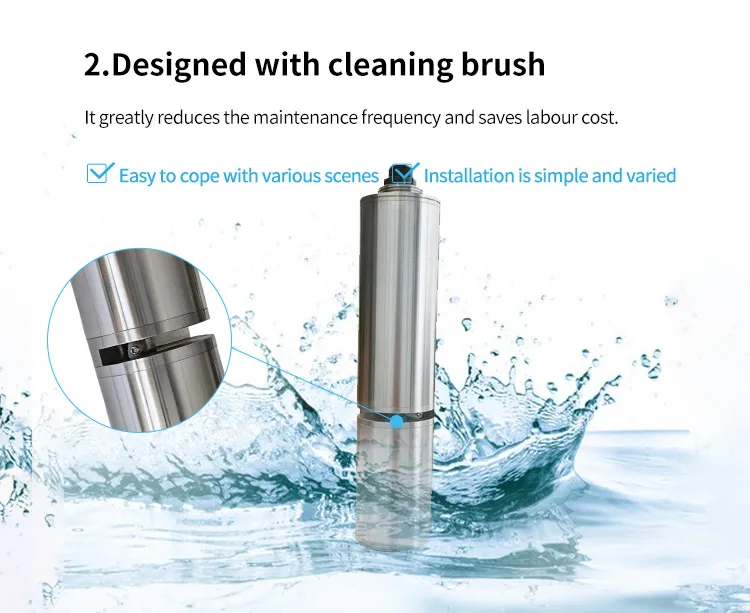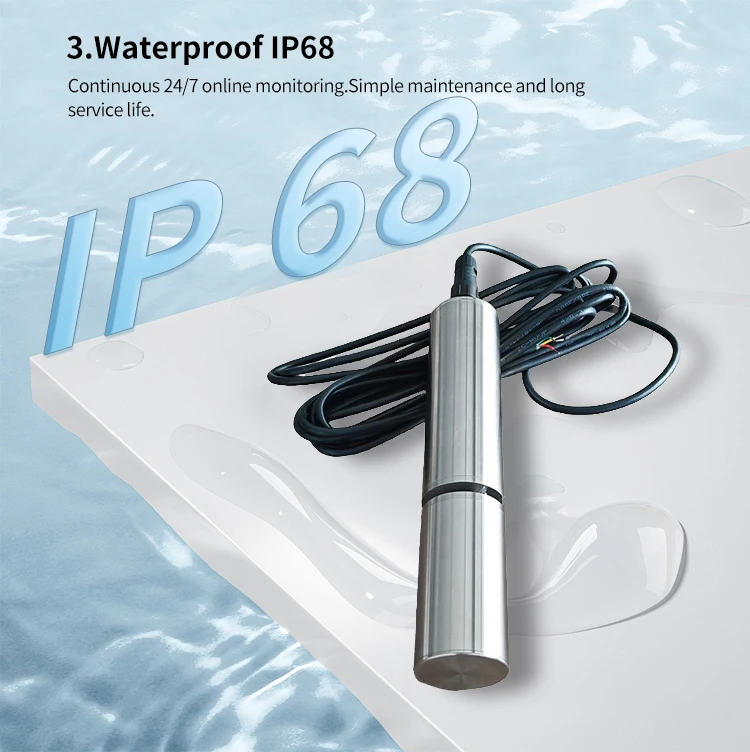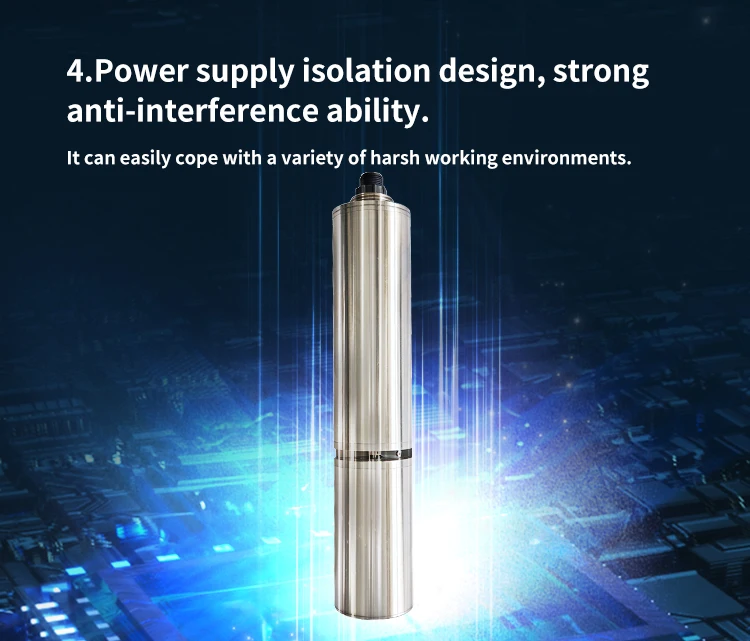
Self-cleaning COD sensor
Key specifications:
✅Range 0-1000mg/L(Customisable)
✅RS485,MODBUS protocol
✅UV254 Optical principle
✅Easy on-site use
✅Self-cleaning system
YCH305 self-cleaning COD sensor based on the principle of ultraviolet absorption method, by measuring the absorption degree of these organic compounds to 254nm wavelength ultraviolet light, can accurately measure the content of dissolved organic pollutants in water. One turbidity detection light source is integrated in the interior, and the turbidity interference of the measured water is automatically compensated. With automatic cleaning brush device, even long-term monitoring still has excellent stability.
Product Features:
✅No reagents, no pollution, more economical and environmentally friendly.
✅Can measure parameters such as COD, BOD,TSS and temperature.
✅Automatically compensate for turbidity interference.
✅With automatic cleaning brush to prevent biological attachment and longer maintenance cycle.
Technical parameters:
| Name | Online Total suspended solids Sensor |
| Model | YCH355 |
| Principle | Infrared scattering method |
| Range | 0-4000mg/L |
| Accuracy | ±5%FS |
| Resolution | 0.01mg/L |
| Linearity | R2 > 0.99 |
| Protection Level | IP68 |
| Working pressure | 3 bar |
| Output Signal | Support RS-485/Modbus protocol |
| Operating Temp. | 0-50℃ |
| Installation method | Input and flow-through type |
| Power Supply | DC 12V-24V, current < 50mA |
| Cable Length | 5 meters (default),Customizable |
| Housing Material | Titanium alloy |
Application area
✅Environmental Protection and Water Quality Monitoring
Surface water monitoring: Conducts long-term monitoring of natural water bodies such as rivers, lakes, and reservoirs to detect problems like eutrophication or illegal discharge of industrial wastewater. For example, automatic monitoring stations have been deployed in the Yangtze River and Yellow River basins in China.
Groundwater and marine monitoring: Monitors organic pollution in groundwater around landfill sites and nearshore sea areas to protect drinking water sources and marine ecosystems.
✅Industrial wastewater treatment.
Chemical/Pharmaceutical Industry: Monitor high-concentration organic wastewater (such as pesticides, pharmaceutical intermediates), optimize pre-treatment processes.
Food/Beverage Processing: Detect organic substances like sugars and proteins to prevent municipal pipe blockages.
Petroleum/Electronics Industry: Assess the hydrocarbon contamination in refinery wastewater and the combined pollution of electroplating waste liquids.
✅Municipal Wastewater Treatment.
Full-process control of sewage treatment plants: Monitoring of COD concentration from the inlet to the outlet to ensure compliance with national standards (such as GB 18918 Grade A standard ≤ 50 mg/L). Network supervision: Identifying leakage or illegal discharge in the urban sewage network.
✅Aquaculture and agriculture.
Aquaculture water quality management: Guides feed feeding and reduces the risk of water pollution.
Irrigation water monitoring: Prevents soil salinization.
Product Advantages




